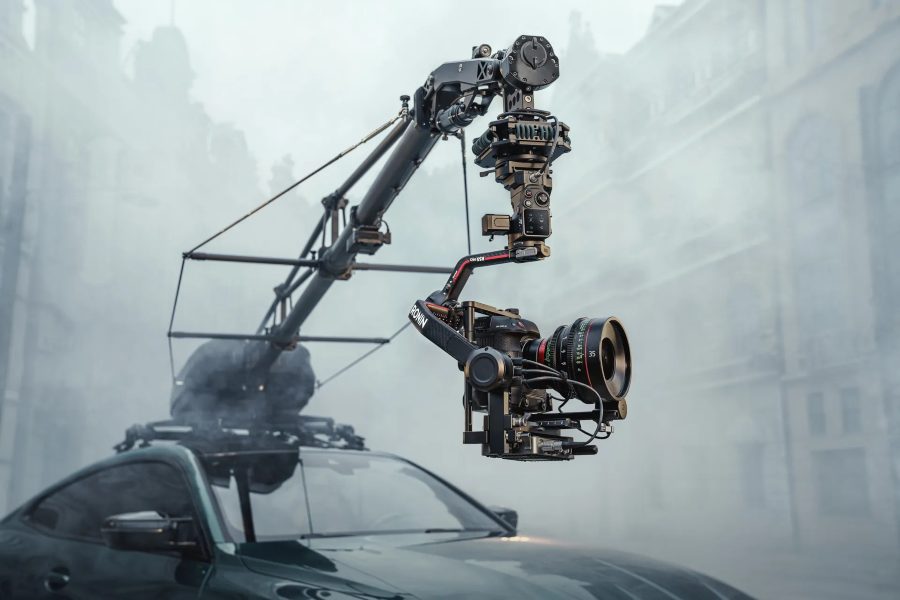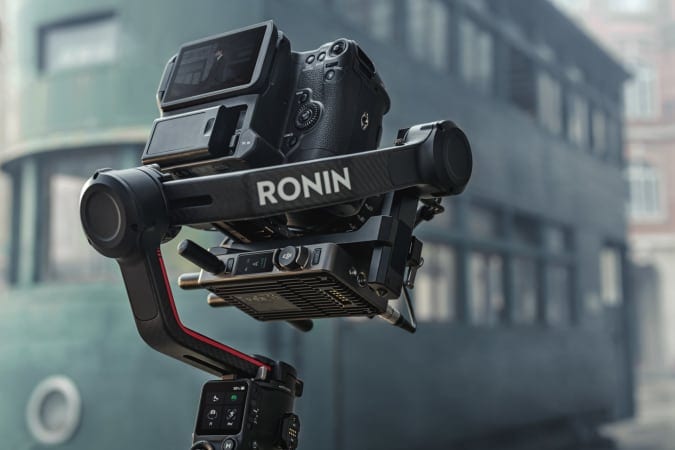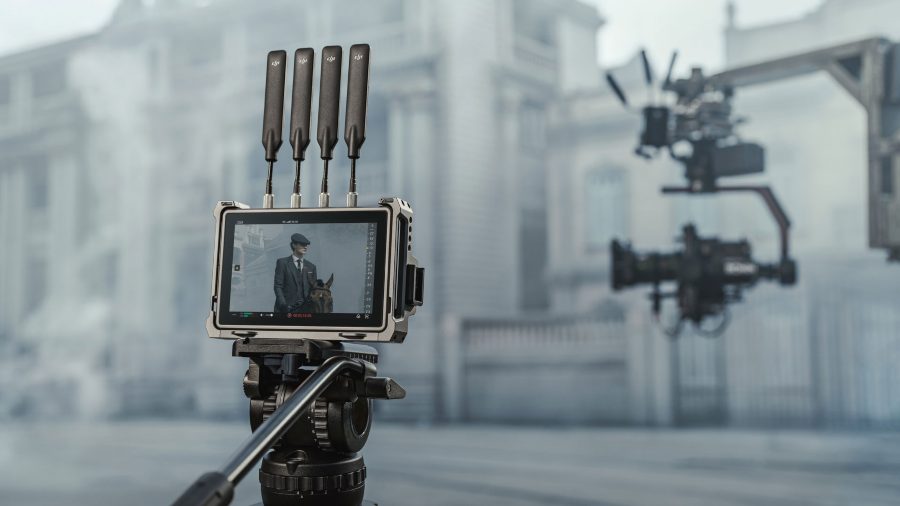DJI Releases Two New Gimbals—Including One with a LiDAR Focus Option—and a New Transmission System
BY Zacc Dukowitz
15 June 2022Today DJI released several new products that make it clear the drone heavyweight has big plans for the cinematography market.
Those releases include two new gimbals, the RS 3 and the RS 3 Pro, which are made for cinema and mirrorless cameras, as well as a new wireless transmission system called DJI Transmission.

The RS 3 Pro
In addition to these products, DJI also shared these other cinema-related developments:
- It unveiled a LiDAR-focusing system that borrows from technology used in the Ronin 4D
- It announced that it has joined the full-frame L-Mount alliance along with Panasonic and Leica
- It released a compensation for removing ProRes RAW files from the Ronin 4D
Late last year DJI released its first full cinematography solution, the Ronin 4D, a complete movie-making tool that integrates imaging, stabilization, and focusing to help videographers shoot faster with less setup time.
With the release of these two gimbals and DJI Transmission, DJI is making it even more clear that it isn’t satisfied only to dominate the realm of camera drones.
Keep reading to learn more about DJI’s two new gimbals and its new transmission system.
The RS 3
The new RS3 gimbal is now DJI’s main flagship gimbal, replacing the RSC 2 which came out back in 2020.
According to DJI, the RS 3 has 20% improved performance over the RSC 2, an improvement that can be seen in the smoother footage you can capture when shooting in challenging scenarios, such as while running, from a moving car, or at low angles.
Of the two gimbals DJI released today, the RS 3 is smaller and can unlock automatically so you can start shooting as fast as possible.
When you turn the gimbal on, the automatic locking system releases and unfolds the RS3 and when you turn it off, the gimbal folds and locks on its own. This is one of the major improvements from the RSC 2 to the RS 3, since the RSC 2 required you to take the additional steps of steadying the camera by hand while turning it off, followed by manually locking it on its three different axes.


Credit: DJI
Here are all the major features that come with the RS 3:
- Quick start features. Automatic locking and quick-release mounts let you get shooting much faster than with the RSC 2.
- Easier to balance. No need to rebalance the arms between shoots.
- Bluetooth shutter button. New support for the Bluetooth shutter button makes it so you can start recording wirelessly without having to connect a camera control cable.
- Interchangeable batteries. A quick release system allows you to change out batteries quickly and easily.
- SuperSmooth mode. Adds enhanced stability for tighter zoom lenses (up to 100mm).
- Larger screen. Comes with a 1.8 inch OLED touchscreen, which is much larger than the RSC 2’s screen.
- Physical sliding switch. The grip now has a sliding switch that lets you toggle between modes like FPV, pan follow, and pan and tilt follow.
The RS 3 is for sale right now. Here are the prices:
- $549 for just the gimbal.
- $719 for the RS 3 Combo, which includes a new focus motor, an extra handle, a carrying case
The RS3 Pro
The RS 3 Pro comes with all the features listed above but it’s bigger than the RS 3, which means it can carry a bigger payload.
While the RS 3 weighs 2.8 pounds and can carry up to 6.6 pounds, the RS 3 Pro weighs 3.3 pounds and can carry up to 10 pounds (the same carrying capacity as the RSC 2). For cinematographers who want to use heavier high end cameras, the RS 3 Pro may be the better option.


Watch this video on YouTube
Another big difference between the RS 3 and the RS 3 Pro is that the Pro uses the same LiDAR-focusing technology found on the Ronin 4D.
In the Pro, this focusing tech is combined with DJI’s LiDAR Range Finder to turn manual lenses into auto-focus lenses.
Here are pricing options for the RS 3 Pro:
- $869 for just the gimbal.
- $1,099 for the The RS 3 Pro Combo, which includes a phone holder, a new focus motor, a Ronin image transmitter, and a quick-release plate.
Learn more about the RS 3 Pro.
DJI Transmission
The wireless video solution DJI released today is simply called DJI Transmission, and it allows you to remotely monitor and control your camera, your gimbal (only the RS 3 Pro for now), or both simultaneously.
The transmission system comes with both a video transmitter and a High-Bright Remote Monitor. The transmitter is made to sit on top of your device and has a 7 inch monitor. The High-Bright Remote Monitor supports one transmitter with multiple receivers, as well as two transitioning modes.


Watch this video on YouTube
Here are the standout features of DJI Transmission:
- Long distance transmission. O3 Pro video transmission technology offers 6km/20,000 feet on-ground transmission distance.
- High quality video casting. Transmission at 1080p/60fps with a max bitrate of 50 Mbps.
- Live audio monitoring. High quality audio transmission at 16-bit 48 kHz.
- Smooth transmission. DFS (dynamic frequency selection) band alternates between 2.4GHz and 5.8GHz frequencies to enable smooth and interference-free transmission channels.


Credit: DJI
Unlike the RS 3 and the RS 3 Pro, which you can buy right now, DJI Transmission won’t go on sale until September.
Here are pricing options for DJI Transmission:
- $2,499 for the full DJI Transmission system.
- $1,699 for just the video transmitter.
- $1,099 for just the High-Bright Remote Monitor.


